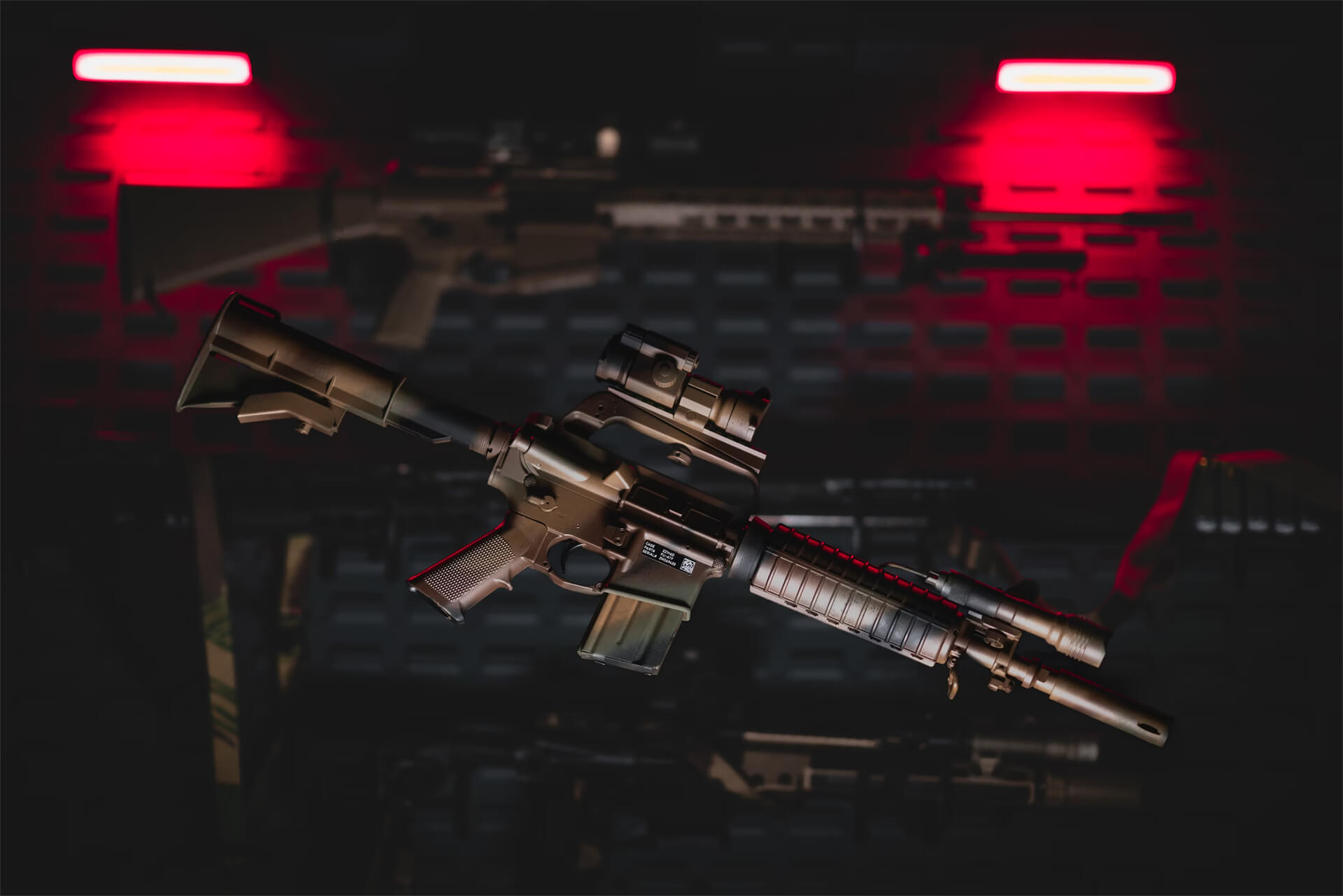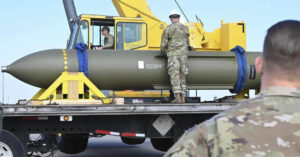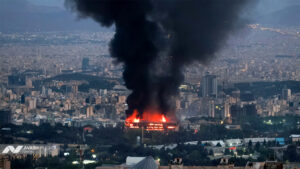We’ve got some new players in the global weapons trade, and let’s just say that I prefer the old gun runners.
Traditional suppliers like France and the UK are still providing weapons to their allies, but Russia is now seeking out weapons for its conflict in Ukraine. This has enabled countries like Iran to emerge as sellers of advanced drones and leverage test data from a real war.
The impact of weapons like this on weaker states could be devastating. From destroying infrastructure to disrupting government functions, we could very well see the dynamics of low-level conflicts completely shift.
Here at Zeihan On Geopolitics we select a single charity to sponsor. We have two criteria:
First, we look across the world and use our skill sets to identify where the needs are most acute. Second, we look for an institution with preexisting networks for both materials gathering and aid distribution. That way we know every cent of our donation is not simply going directly to where help is needed most, but our donations serve as a force multiplier for a system already in existence. Then we give what we can.
Today, our chosen charity is a group called Medshare, which provides emergency medical services to communities in need, with a very heavy emphasis on locations facing acute crises. Medshare operates right in the thick of it. Until future notice, every cent we earn from every book we sell in every format through every retailer is going to Medshare’s Ukraine fund.
And then there’s you.
Our newsletters and videologues are not only free, they will always be free. We also will never share your contact information with anyone. All we ask is that if you find one of our releases in any way useful, that you make a donation to Medshare. Over one third of Ukraine’s pre-war population has either been forced from their homes, kidnapped and shipped to Russia, or is trying to survive in occupied lands. This is our way to help who we can. Please, join us.
TranscripT
Hey everybody. Peter Zeihan here coming to you from Colorado. And today we’re going to talk about recent changes to the global weapons trade. Now, there are some usual suspects that are still in play. Notwithstanding this, France, United Kingdom, still providing weapons to their allies as well as their, actually, we call quasi allies. And most of this stuff tends to be pretty standoff weapons free.
that links you into a supply chain network that is much political and strategic as it is technical. So, for example, when the United Arab Emirates buys things like F-16s, it’s not because they’re necessarily planning on flying them. They buy the best available because they want to make a big splash in the checkbook of American arms manufacturers for political reasons.
They’re they’re purchasing a relationship with the United States. And so the more advanced stuff like, say, the F-35, they will probably never fly. Anyway, that is continuing apace. and the Chinese, of course, are involved too. The problem with the Chinese is nobody trusts the supply chain in times of conflict. because the Chinese have proven that they’re willing to extend or withdraw technical support based on other concerns.
And so if you want some cheap stuff, that’s unlikely to, be too useful in the long run. The Chinese are definitely there for you. But the more advanced stuff, the Chinese really don’t like to share the good stuff. So, you know, I would suggest they’re not a player, but not a huge one. when you consider the size of their manufacturing base, the two, the three countries, however, who have really changed in the last couple of years.
the first one, of course, is Russia, who is now involved in its own hot war. And instead of selling weapons to the wider world, it’s buying weapons from the wider world, specifically from the countries that it once sold to its opponents all the equipment back because they know they can’t absorb too much technology, and they know they need more bullets and artillery rounds and everything else.
the other two players who have changed, the first one has also slipped down the rankings, and that’s North Korea. I hear it’s a technical issue. North Korea is many, many things, but a technological superpower does not. And while it in the past has produced a large number of weapons for export, the quality of them hasn’t really improved over the last 20, 25 years.
So they are seen in the face of more advanced systems, a little bit of competition. I don’t mean to suggest they’re not a proliferation risk. things like intercontinental ballistic missiles or nuclear programs. Those are still things where they are in the top ten in the world. but it’s not like they’re this gaping source like they used to be.
And one more thing about the North Korean military, you know, it’s huge. And they spend a lot of their efforts simply keeping up with what they’ve already built, just keeping it updated. So you miss the Ukraine war has been a godsend because the Russians came in and bought something like 10 million artillery shells from them that were half century old.
And so the North Koreans are spinning up their industrial process to keep their own system supplied. They don’t have a lot of spare capacity for mass exports. and that leaves the new kid on the block country that usually we think of as a weapons purchaser rather than a seller. And that is Iran. Iran, starting about seven years ago, started to get into the world of drones when it launched an attack across, Iraqi airspace to target, the Gwadar oil fields in Saudi Arabia.
And since then, they’ve been using the Yemen war as cover to basically test out all their new kit. And now, with the Ukraine war, they are selling stuff for the Russians. And the Russians are replying with a, a lot of real time weapons information and are starting to mesh it into their satellite network. So the Iranians are getting much better test data than they’ve ever had before.
And this is allowing the Iranians to produce these things at scale, knowing there is a long term consumer in the Russian space, and it’s also allowing them to expand their industrial plant that’s necessary to sell these things on a wider market. So we’re seeing things like the shaheed drones that have become famous in Ukraine for attacking power systems, popping up in wars throughout the Middle East and in Africa.
And in this, we’re seeing kind of the curl of the wave of a new wave of weapons technology that it’s not so much that it’s super accurate, although compared to, say, the ballistic missiles of a too long ago, it is it’s you can attack a specific target with precision at a significant standoff distance. the shaheed can easily go 1000km, and some of the better versions can even go further.
And while the warheads may not be massive against an unarmored target, it’s pretty much a guaranteed kill. And you use them to target buildings rather than, say, moving cars or something like that. As we are discovering throughout the Ukraine war, it is much cheaper to launch these attacks than it is to defend against them. And when you look at places that have limited infrastructure where the power of the state isn’t great, those are the places where these sorts of weapon systems are going to have an outsized impact.
So, for example, just to pick one out of the box, the Civil War that’s currently going down in Sudan, there aren’t a lot of fixed places that are worth something. And those that are in existence can get hit by drones very, very easily. So for weaker states, this evolution and technology is almost the kiss of death. If you get into an armed conflict, because there’s no way you can afford to defend your fixed sites.
So the only solution is to buy a bunch of these weapons and hit the other guy first. So the conflicts that we’ve been seeing that have been steadily more involved and bloodier since about 1990. In this part of the world, sub-Saharan Africa, North Africa and the Middle East, and maybe to a lesser degree, Central Asia, you should expect to see a lot more activity like this, and you should expect it to do some real damage, not necessarily in a military sense, but to the ability of a government to function.
Because if you can start taking out things like power centers, and every once in a while, drop a drone on the presidential palace, the disruption that’s going to have to a system that is already pretty weak is fairly extreme. Today, Iran is the primary purveyor of things like this. But, you know, no offense to the Persian scientists.
They’re not top notch. And it’s not going to be too long before other countries get in on that particular action. As these weapons become the new normal for low level conflicts around the world.









